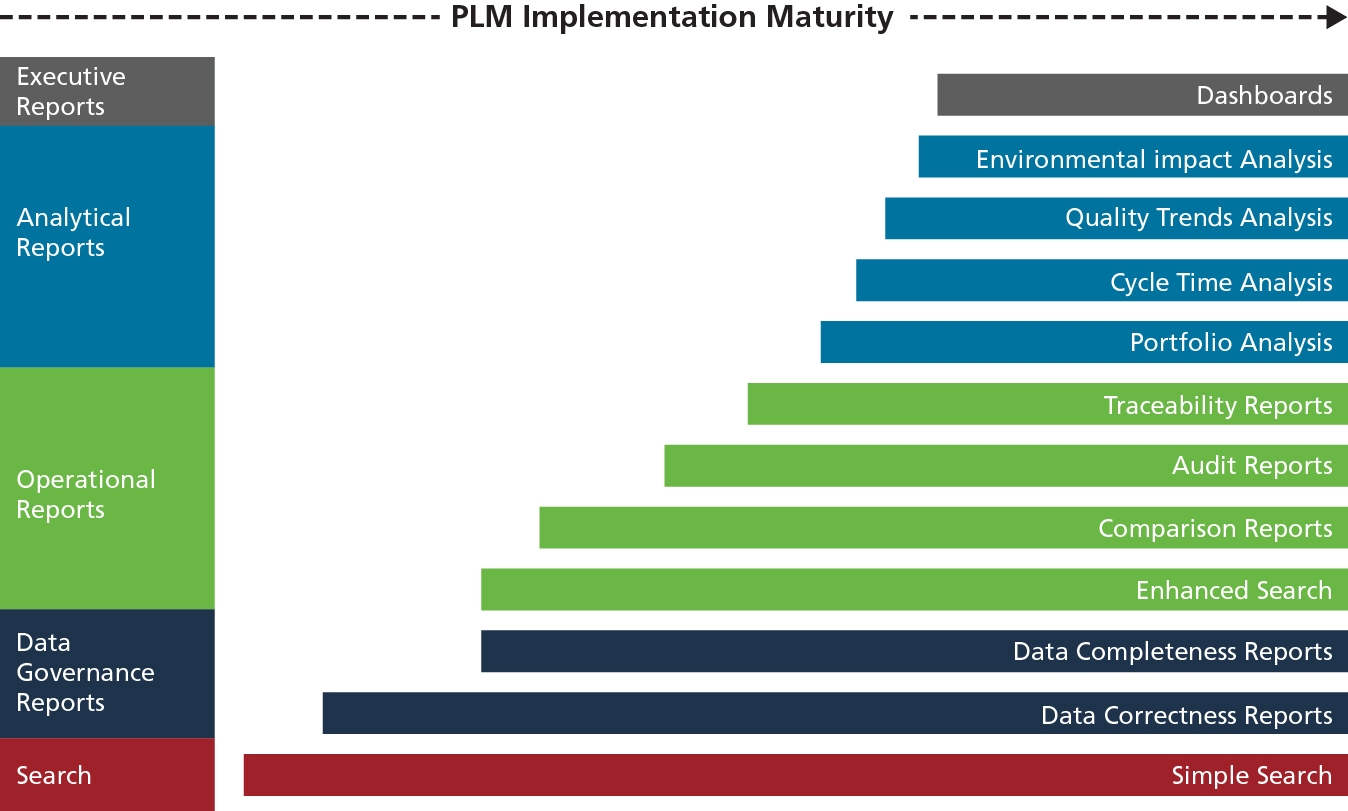Why Your PLM Solution Has Not Delivered Value (Yet): Information accessibility and usability hold the keys
More than two-thirds of organizations with Product Lifecycle Management (PLM) solutions in place don’t realize the expected value from their implementation.
As PLM system implementations have become more prevalent, analysis of PLM value has shifted from the theoretical to the empirical. There is now a sufficient historical basis to examine where the promises of PLM have fallen short and why. An honest look at implementations reveals some glaring, frequent constraints on the full value realization of PLM: incomplete data integration, inconsistent access, poor reporting/analysis capabilities, and lack of understanding of the true business value of the data. These constraints can be grouped into two categories – accessibility and usability.
Data Accessibility
Data accessibility can be defined as the scope of readily available data. The ease of acquiring this data will vary depending on things like potential relevance, volume, and number of disparate systems housing the data. Nevertheless, some consistency and automation criteria must be met to identify data as “accessible,” or the hidden costs incurred by complex, manual interventions needed to prepare the data for analysis will undermine the value of the entire PLM investment.
One of the primary constraints on data accessibility is system silos within single organizations. The proliferation of data systems – whether through historical accident or strategic compromises – is responsible for many of the complexities and costs related to data access.
Data accessibility and ease of access is necessary to realize some of the most important PLM benefits, including:
- Robust predictive analysis based on integrated data from relevant sources
- Reduced data management and data manipulation costs
- Better agility to adapt business strategy and processes based on real-time analytics
- More reliable data to mitigate risk exposure
Data Usability
If accessibility is the scope of an organization’s data, usability is the depth. The richness of data determines the nature, volume, and reliability of insights that can be mined from that data. For example, a retail store whose point-of-sale data captures only the product SKU and price may satisfy inventory and financial requirements, but misses out on rich data points like customer demographics, method of purchase, and purchasing history. These additional data points unlock the potential for customer segmentation, targeted marketing, and other advanced capabilities that inform and advance strategic direction.
The usability of data is necessary to realize many of the remaining PLM benefits, including:
- Customizable, complex reporting
- Adaptation of analytics to align with changes in business needs
- Convenient dashboards that allow efficient analysis
PLM maturity impacts both accessibility and usability of relevant information. The model below illustrates how the usability of PLM information improves with implementation maturity. Understanding where an organization is on the implementation maturity curve will help determine the best path to value realization.

Converting Accessibility and Usability into Value
Problems commonly arise when PLM development is shortsighted, resulting in blind, incremental advancement in all directions. This is the source of many tactical problems – partial integration, inconsistent access, and obsolete reports – which can threaten the ability to align innovation management with business strategy, measure the ROI, and demonstrate breakthrough innovation results.
To maximize the value of PLM data, it needs to be both accessible and usable. A comprehensive, four-step approach will help maximize the data value. It is important that the steps of this holistic process be approached in concert with one another. For example, developing a foundation is – by definition – not something that is done incrementally after a solution is implemented.
- Assess Capability
- Understand business imperatives and PLM reporting strategy
- Assess current landscape, capabilities, and challenges
- Identify gaps and develop plan to resolve them
- Design Solution
- Identify and define key business metrics
- Design dashboards and reports to enable performance management
- Develop common understanding and executive buy-in
- Develop Foundation
- Develop and implement solution foundation
- Implement priority metrics and governance
- Implement Solution Roadmap
- Further define solution details
- Implement the solution according to the roadmap
Taking these steps according to a consistent vision puts an organization in a position to unlock the full potential of PLM. Regardless of your organization’s current level of PLM maturity, keeping the accessibility and usability of your information top of mind will help your organization realize the full expected benefits.
